The following article could claim some connections with both mathematics and social media, but in truth relates to neither. Its focus is instead on irritation, specifically a Facebook meme that displays the death-defying resilience of a horror movie baddie. My particular bête noire relates to the following diagram, which appears on my feed more frequently that adverts for “Facebook singles”:
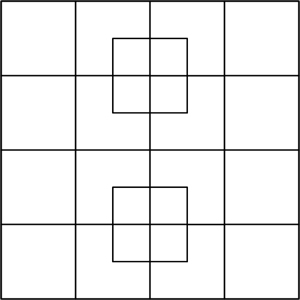
The following article could claim some connections with both mathematics and social media, but in truth relates to neither. Its focus is instead on irritation, specifically a Facebook meme that displays the death-defying resilience of a horror movie baddie. My particular bête noire relates to the following diagram, which appears on my feed more frequently that adverts for “Facebook singles”:

It is generally accompanied by some inane text, the following being just one example:
I got into a heated battle with a friend over this… I got 24 she say’s 25. How many squares do you see?
I realise that the objective is probably to encourage people to point out the error in the ways of the original poster; thereby racking up comments. However 24?, 25??, really???, really, really????
Let’s break it down…

Well there is clearly one big square (a 4×4 one) staring us in the face as shown above. Let’s move on to a marginally less obvious class of squares and work these through in long-hand. The squares in this class are all 3×3 and there are 4 of them as follows:
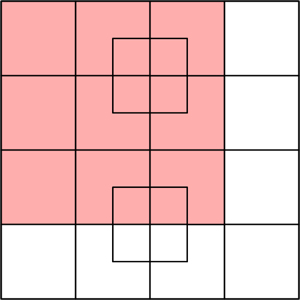
1…

2…

3…
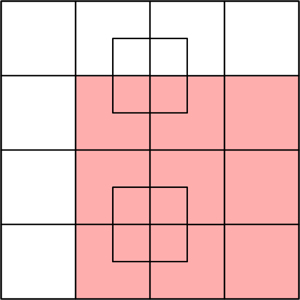
4…
Adding the initial 4×4 square, our running total is now 5.
The next class is smaller again, 2×2 squares. The same approach as above works, not all the class members are shown, but readers can hopefully fill in the blanks themselves.
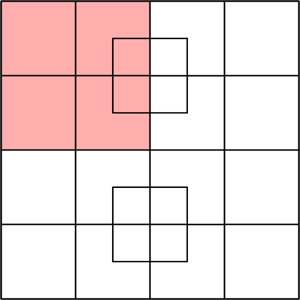
1…
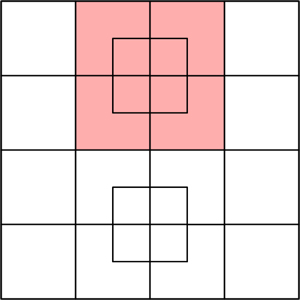
2…
Skip a few…

9…
Adding our previous figure of 5 means our running total is now 14; we are approaching 24 and 25 fast, which one is it going to be?
The next class is the most obvious, the sets of larger 1×1 squares.

It doesn’t require a genius to note that there are 16 of these. Oh dear, the mid-twenties estimates are not looking so good now.
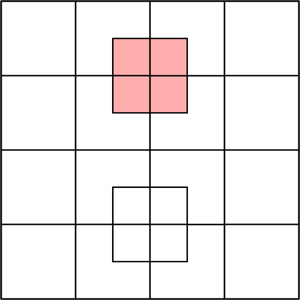
Also we shouldn’t forget the two further squares of the same size (each of which is split into smaller ones), one of which is shown in the diagram above.
Our previous total was 14 and now 14 + 16 + 2 = 32.
Finally there is the second set of 1×1 squares, the smaller ones.

It’s trivial to see that there are 8 of these.
Adding this to the last figure of 32 we get a grand total of 40, slightly above both 24 and 25.
Perhaps the only thing of any note that this rather simple exercise teaches us is the relation to sums of squares, inasmuch as part of the final figure is given by: 1 + 4 + 9 + 16, or 12 + 22 + 32 + 42 = 30. Even this is rather spoiled by introducing the intersecting (and interloping) two squares that are covered last in the above analysis.
Oh well, at least now I never have to comment on this annoying “puzzle” again, which is something.





